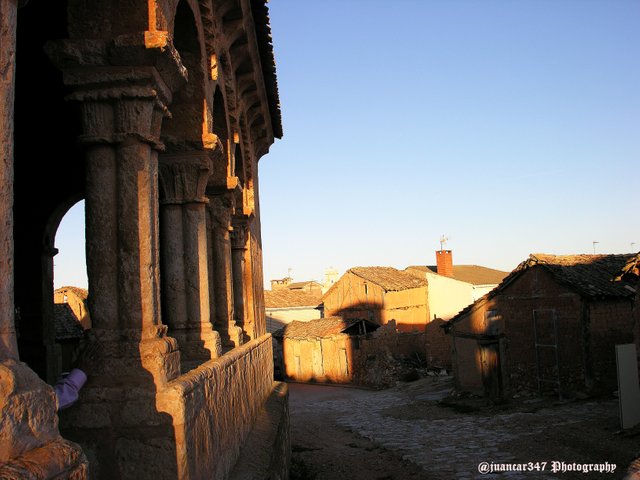
'This is a journey through time and geography. In time, towards the past, towards the time in which those wonderful buildings were built that have survived time as representations of the city of God on earth and that we know as cathedrals, and, in geography, through a country that is a mosaic of regions as different as its landscapes ... '(1).
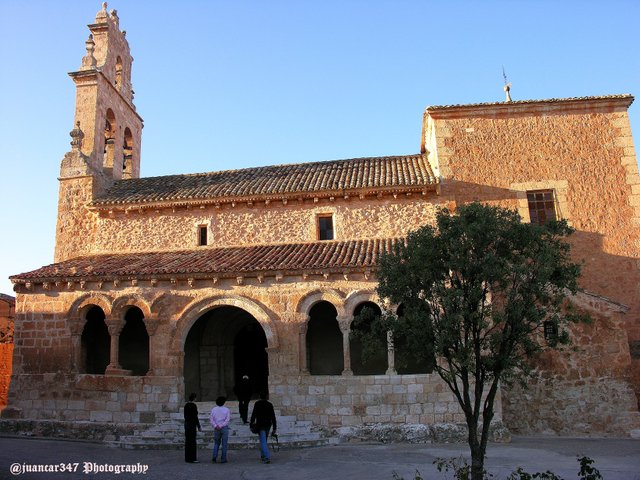
It is evident that in Rejas de San Esteban there is no cathedral, although there are two exceptional buildings that, in all fairness, could well be defined as authentic Romanesque roses: the church of San Ginés and the church of San Martín.
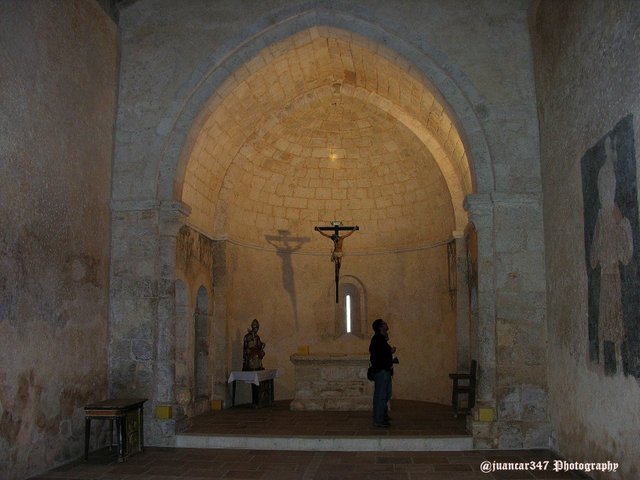
Both churches, like their homonyms of San Esteban de Gormaz, can be classified, in my opinion, within the oldest Romanesque in the province; that is, the one that arose in the eleventh and twelfth centuries, and which is characterized as a period in which the dream of the Reconquest began to have signs of reality.

Curiously - and this detail, it does not cease to have its malicious and disconcerting side - next to a sign that indicates the distance to the town -3 kilometers- there is another, with its bright pink color indicative of Historic Artistic Monument, in which you can read , textually, the following: 'Romanesque church'.
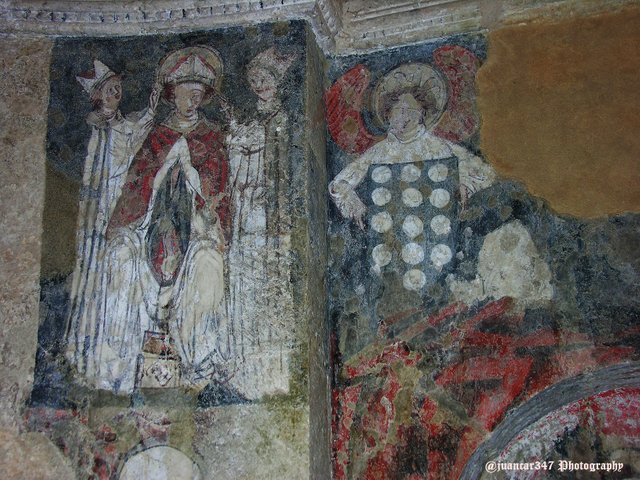
This detail, which in principle may be unimportant, baffles the traveler who, once left behind the vineyards that escort him on both sides of the road on his way to the town, discovers - marveling and heartless at the same time - that in addition to the titular parish, the Romanesque church of San Ginés, there is another, located in the highest part of the town, which has elegant and proportionate lines, and that even today, after the centuries and the many historical avatars, conserves -no I will say that intact, but reasonably in good condition - much of its structure, or rather, of its original Romanesque charm; I mean, to the church of San Martín.
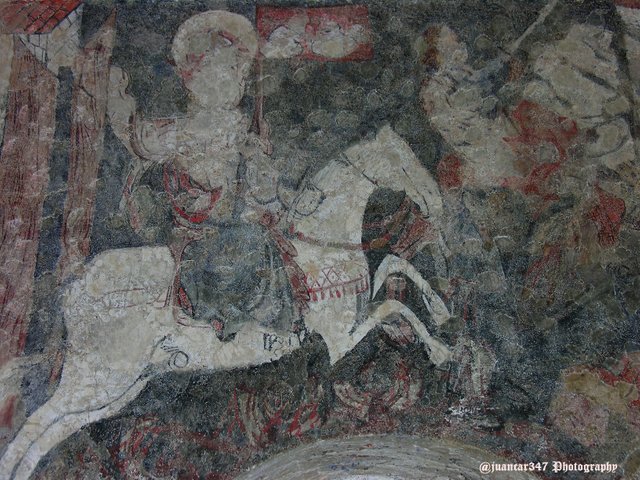
But let's go in parts. I said the wonder and heartlessness at the same time, referring to the church of San Ginés, because, still very modified its original structure, offers a message of interest in the theme of its canecillos, as well as in the capitals that decorate its gallery porticoed, although discouraging, and much, observe the progressive deterioration of these and the consequent threat posed by the arrival of a moment, perhaps not too far away, when they are definitely lost, passing their arcane message to be part of the dust of the roads .
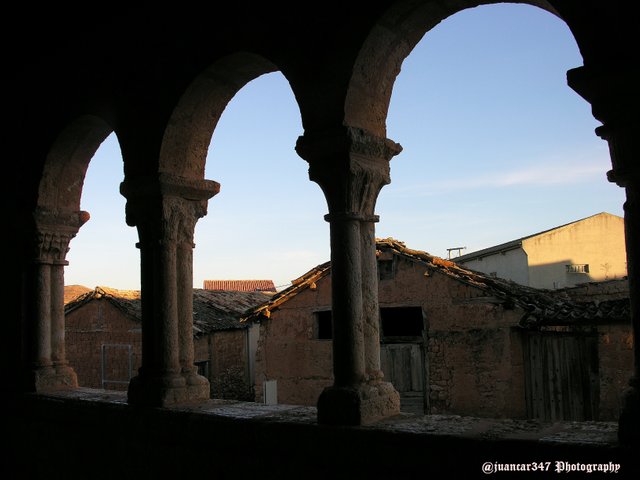
It is with reference to the capitals, which attracts my attention, one in particular, that follows the same trace - or at least, very suspiciously similar - to those others that I had the opportunity to observe last August in some Romanesque churches of the Burgos Merindades (2).
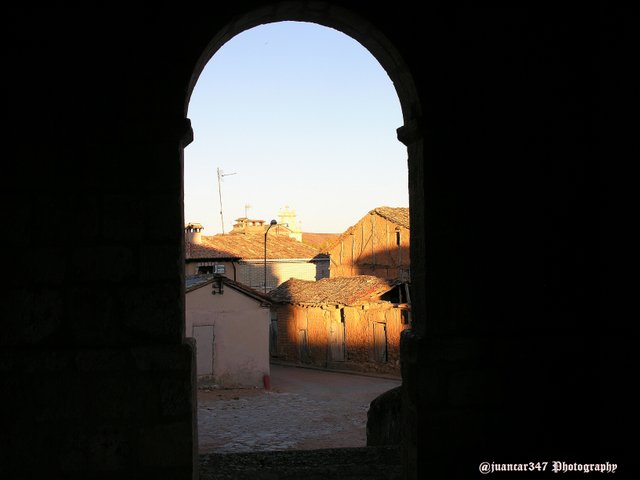
It is a capital related to the Camino de Santiago, which is usually associated with the arrival of pilgrims in the port; in this specific case of the Merindades, it can make reference, due to its relative proximity, to the Cantabrian ports of Santoña and San Vicente de la Barquera, in which the pilgrims disembarked to Spain by sea.
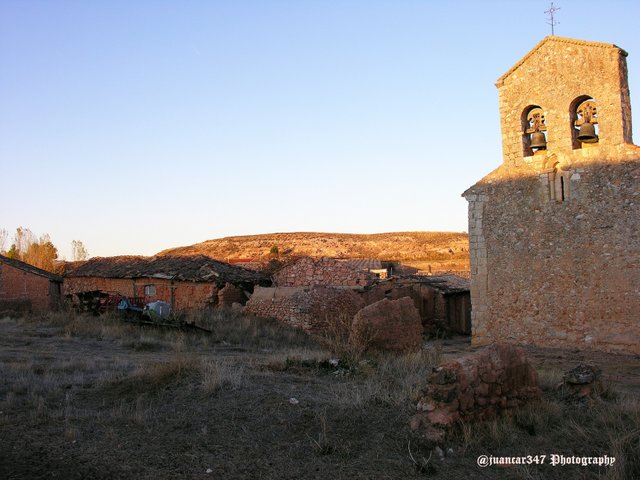
Of course, it is not a capital that is frequently observed in the Romanesque Soriano; in fact, it is the first of its kind that I meet, if we except the extraordinary capital that is in Garray, inside the chapel of the Holy Martyrs - formerly, of San Miguel, and located a few meters from the Ruins of Numancia- which is one of the most beautiful and best worked in its genre that I know and that, counting the number of characters -doce- sailing in three small boats, I could well refer to the apostles, distributing around the world to preach the Gospel.
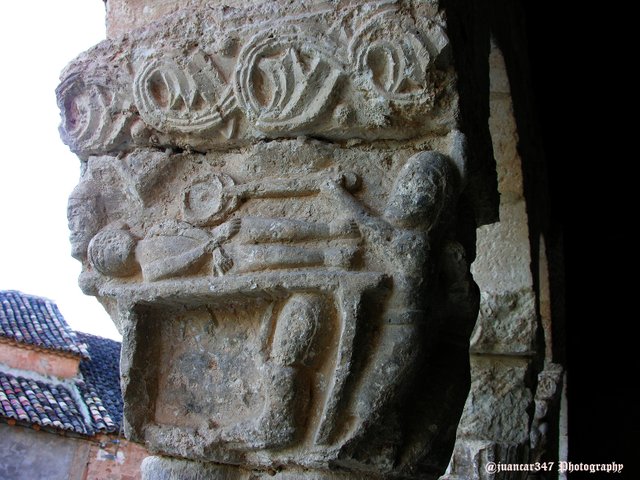
Of them, however, the character who sails alone in the central boat stands out - to which the stonecutter, for a good reason, I have no doubt, gives him some relevance over the rest - and who may represent the pillar of the church Catholic: San Pedro.
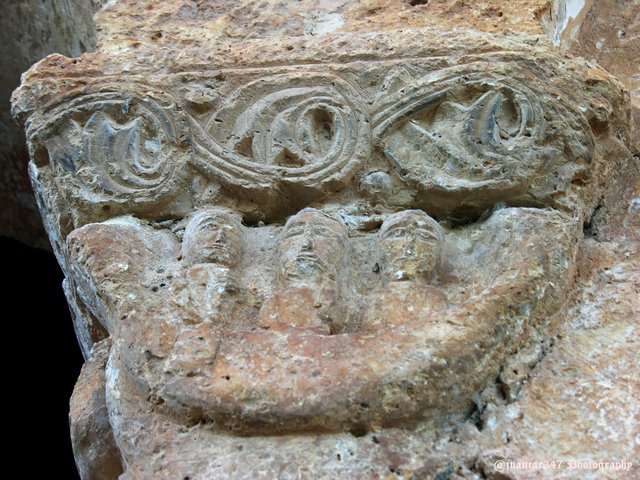
With respect to the rest of the capitals, and unlike in the church of San Martín, in addition to the vegetable references, in San Ginés a certain motivational variety is observed, which goes from the funeral allusions - note in the video the capital where the capital is detailed burial of which, at first sight you can identify with a musician or a minstrel, judging by the instrument that the officiant seems to be depositing next to the inert body- to the representation of birds - storks with interwoven necks, and beasts faced, motive This is repeated in other churches in the area, such as in the parish of Berzosa, as well as in the second church of Rejas de San Esteban: the church of San Martín.
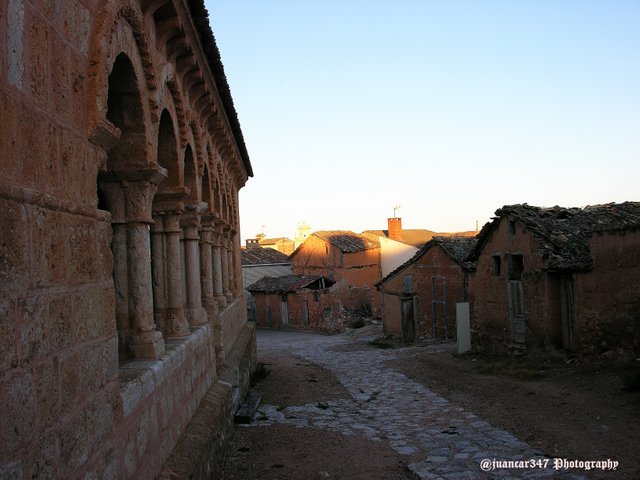
Nor should we forget the figure of the centaur-sagittarius, which in the case of the church of San Ginés, is represented both in a capital of the gallery, and in one of the little canes that adorn the upper part of the access portico, and that could lead to some astronomical or astrological symbolism, typical of the time.
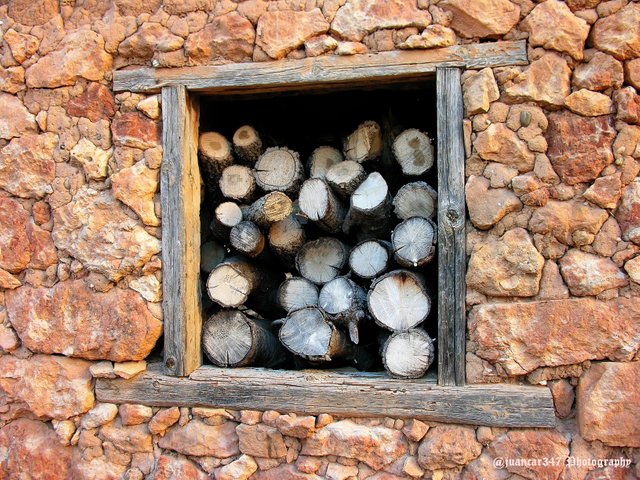
Notes, References and Bibliography:
(1) Julio Llamazares: 'Las Rosas de Piedra', Santillana Ediciones Generales, S.L., 2008.
(2) For example, San Pantaleón de Losa or the church of Nª Sª de la Asunción, in the Burgos town of La Cerca.
NOTICE: Originally published on my blog SORIA WAYS TO WALK. Both the text and the accompanying photographs are my exclusive intellectual property. The original entry, where you can verify the authorship of juancar347, can be found at the following address: https://juancar347.blogspot.com/2010/01/rejas-de-san-esteban.html
Te invito a conocer el mundo del que estoy enamorado.
Image © juancar347. All Rights Reserved.
Original content by @juancar347
Discord
juancar347#4046
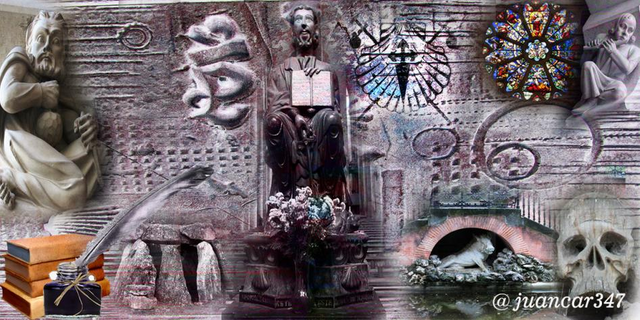.png)
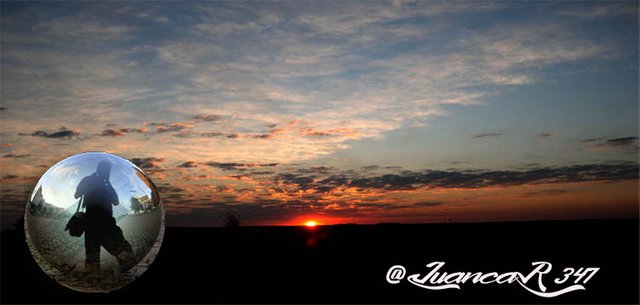
[Martial, latin poet]
.jpg)
Toca la imagen y participa.
Diviértete y disfruta.



Esta flotando la cruz!! :D
Downvoting a post can decrease pending rewards and make it less visible. Common reasons:
Submit
Para que empieces a creer en los milagros
Downvoting a post can decrease pending rewards and make it less visible. Common reasons:
Submit
Congratulations! Your high-quality travel content was selected by @travelfeed curator @elsaenroute and earned you a reward, in form of a 100% upvote and a resteem. Your work really stands out! Your article now has a chance to get featured under the appropriate daily topic on our TravelFeed blog.
Thank you for being part of the TravelFeed community!
Learn more about our travel project by clicking on the banner above and join our community on Discord
Downvoting a post can decrease pending rewards and make it less visible. Common reasons:
Submit
Thank-you very much
Downvoting a post can decrease pending rewards and make it less visible. Common reasons:
Submit
super! loved the last pic very much.
ps. Parece que la pintura ha pasado peor tiempo que la arquitectura hecha de piedra sólida.
Downvoting a post can decrease pending rewards and make it less visible. Common reasons:
Submit
You have no reason as to what you say about the painting. But it makes sense. Fundamentally, it is due to two factors. Almost all Romanesque and many Gothic temples, were true Sixtinas Chapels, were painted with great profusion of details. Among the components of the painting, there was also the use of animal blood. During the Middle Ages, as you know, there was a great epidemic of plague and it was thought that the paintings, by the blood they contained, attracted all kinds of flies, bed bugs, parasites, etc. It was decided to cover them with lime. That is why many of them are half recovered. On the other hand, in later centuries, Baroque art also conceived to hide them, since it was frequent, as fashion so imposed, place large altarpieces that covered the walls of the apses or headboards, hiding the original paintings. Thank you very much for your comment.
Downvoting a post can decrease pending rewards and make it less visible. Common reasons:
Submit
lime, you mean,-- white chalk? this is quite intresting to me, I didnt know they used animal blood (why they did it?..)
my education in this field is non systematic.
I plan to read someday one great historic book, on the inks humans used (wy wife had read it, and she's fascinated!). but it will be... idk when... someday! thanx one more time.
Downvoting a post can decrease pending rewards and make it less visible. Common reasons:
Submit
I believe that the first ink that man used was the blood, usually of the animals he hunted, although it is not ruled out that he also used it of his fellow men. You have the best proof in rock art, the paintings that decorated those prehistoric sanctuaries that were the first house and the first 'church' of humanity.
Downvoting a post can decrease pending rewards and make it less visible. Common reasons:
Submit
Congratulations, Your Post Has Been Added To The Steemit Worldmap!
Author link: http://steemitworldmap.com?author=juancar347
Post link: http://steemitworldmap.com?post=villages-with-art-and-mystery-soria-rejas-of-san-esteban
Want to have your post on the map too?
Downvoting a post can decrease pending rewards and make it less visible. Common reasons:
Submit